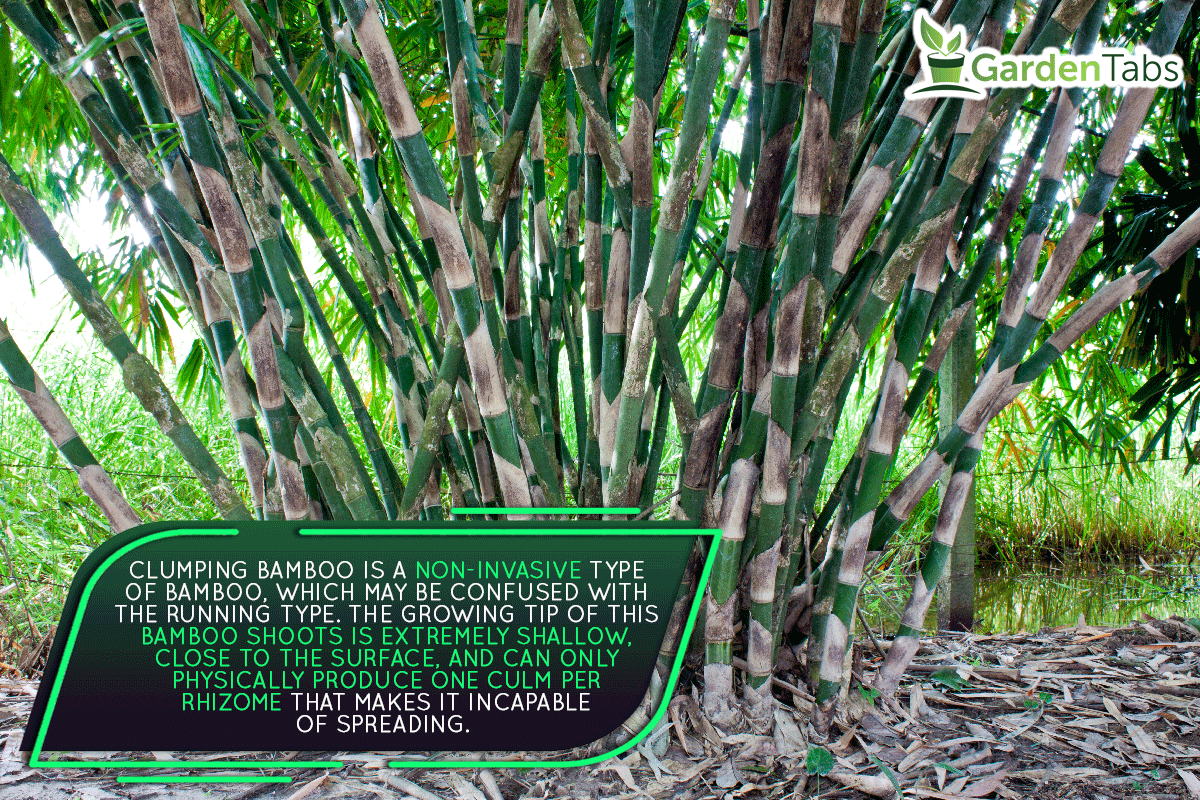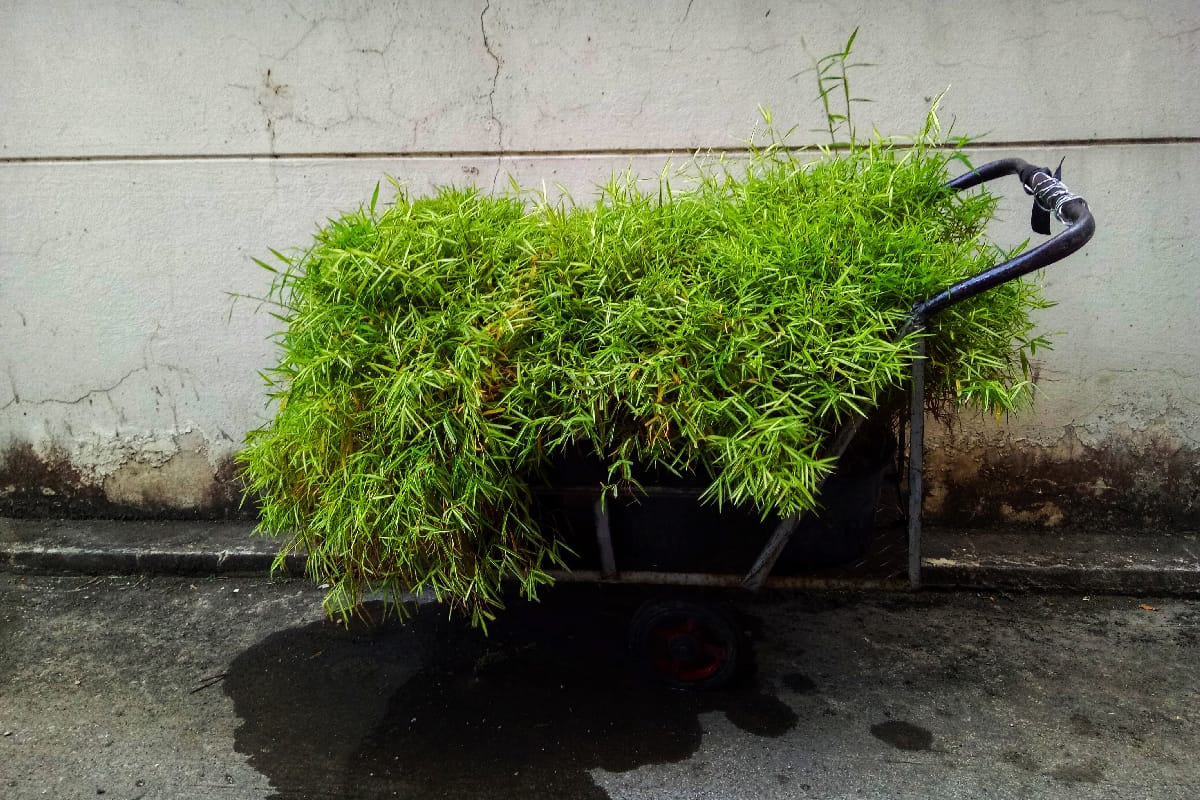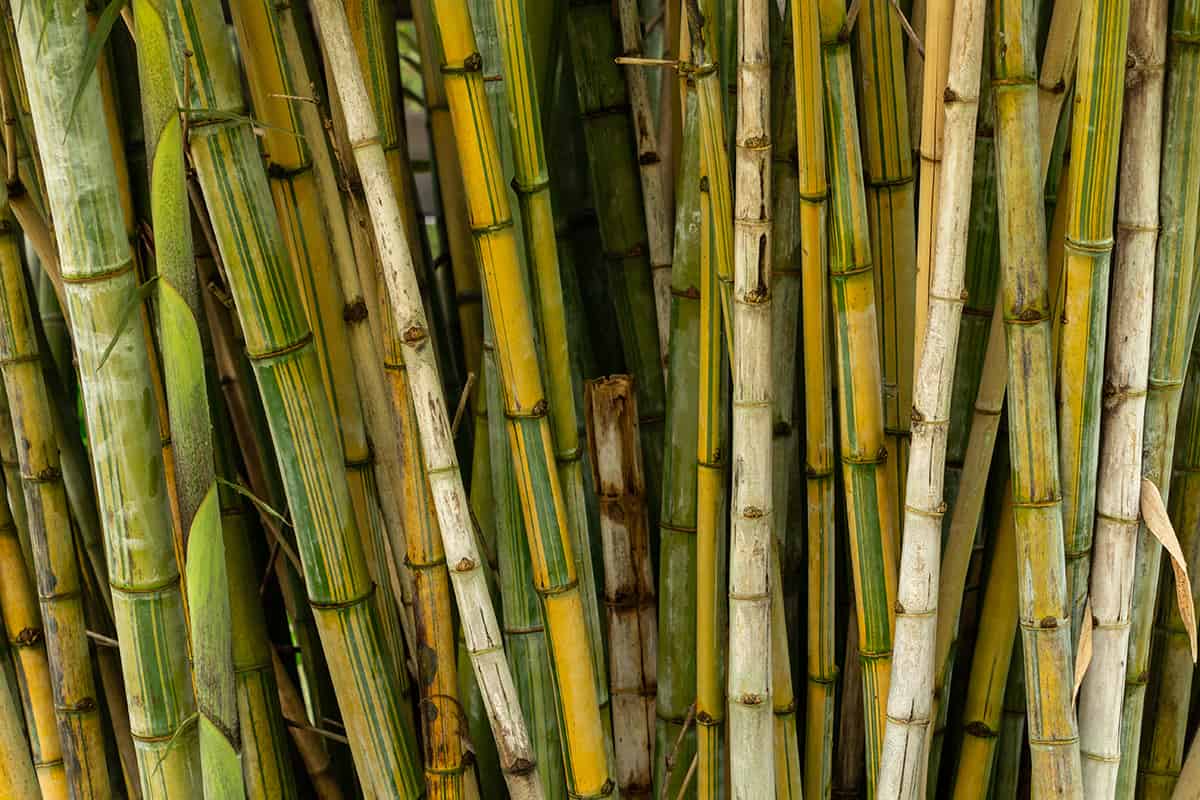Bamboo gives your landscape and garden designs a modern look. It is the ideal hedge for your landscape because of its brilliant green color and exceptional height. However, you might be wondering if all bamboo plants are invasive, especially the clamping type of bamboo. We’re here to help you as we share what we researched from the experts.
Clumping bamboo is a non-invasive type of bamboo, which may be confused with the running type. The growing tip of this bamboo shoots is extremely shallow, close to the surface, and can only physically produce one culm per rhizome that makes it incapable of spreading.
In this article, we will discuss clumping bamboo in detail. We'll share some varieties of it and some strategies you can employ to stop spreading. We understand your concerns, so keep reading to learn more about all of these matters.

What is Bamboo?
Bamboo belongs to the Poaceae family of grasses. It is one of the wood plants with the fastest growth rates and grows easily. Bamboos continue to grow after being cut, unlike trees.
After you trim the visible bamboo poles, their tough root system will produce more. The poles can grow up to 24 inches or more in a day. Bamboo's quick growth makes it simpler to produce traditional hardwood forests.
Due to bamboo's adaptability, it can be grown in just about any climate. Bamboo also comes in a variety of forms. But running bamboos and clumping bamboos are the two most popular for use in domestic landscaping.

Does Clumping Bamboo Have Invasive Roots?
Since bamboo grows so quickly, you've probably heard that it is invasive. Bamboo can quickly engulf nearby plants due to its ferocious growth habit. Since it doesn't typically spread by seed, unlike most invasive plants, it rarely poses a serious threat. Not all species of bamboo are invasive, such as the clumping type.
Pachymorphic or u-shaped rhizomes on clumping or sympodial bamboo grow upward into a culm. On an existing rhizome, shoots give rise to new rhizomes. The bamboo takes on a "clumping" shape as a result of the chain reaction that encourages shoot growth within the existing area.
Bamboo clumps can grow to a mature height in four to six years under ideal conditions. Even though you don't need to do much to control its predictable growth pattern, you should still maintain it properly.
Generally speaking, clumping bamboos are more drought-tolerant than runners. They have a deep burrow and can survive in shade. The compact and sturdy root system forms in a tight clump and grows gradually, rarely extending more than a few inches in a single year.
It can be difficult to grow clumping bamboo outside of USDA zones 8–10 because it is tropical, which means it is not very cold-hardy. Some mountain bamboos are more resistant to cold temperatures. On the other hand, southern clumpers, which resemble running bamboo, can grow to enormous sizes and spread out quickly.
The climate zone is the main challenge for clumping bamboos. The arrangement of the canes in the clump is another issue. Although bamboo is adapted to grow in clusters.
Occasionally clumping bamboo can get so compact that canes become misshapen and dead canes become lodged in the center, making them difficult to access without cutting through the outer layers.
What Are Some Varieties Of Clumping Bamboos?
Clumping bamboo comes in many different varieties. When doing landscape, you will have a lot of options to consider. Here are some varieties of clumping bamboo that gardeners most frequently grow:
1. Slender Weavers

Slender weavers are a common variety of clumping bamboo. This plant has tall, slender, light green or yellow poles covered in lush green foliage. Because of its tight clustering, it can be a great privacy screen.
When choosing a planting location, bear in mind that this variety tends to be fairly tall at maturity, reaching heights of up to 19-23 feet.
Slender weavers can withstand frost and can grow in either full sun or partial shade. Slender weavers that have grown to maturity can withstand drought, but the plant thrives in soil that drains freely.
2. Chinese Dwarf

This is ideal for those seeking a denser clumping bamboo variety. If left untrimmed, this bushy clumping bamboo can grow up to 26 feet tall, making it a fantastic privacy screen or barrier.
Chinese dwarf bamboo can withstand both frost and drought and prefers full sun. Similar to Slender weavers, they require well-drained soil. For an easily transportable feature, these plants can also be grown in pots.
3. Ghost

The poles of this classy variety of clumping bamboo are light green and dusted with white powder. These culms mature and turn light green or yellow, creating a stunning array of colors from mature plants.
If left untrimmed, these plants can reach an enormous height of 40 feet, but regular trimming can keep them at a more suitable height. Once it has grown, ghost bamboo can withstand both drought and frost. These plants typically have tall, exposed poles that are beginning to sprout foliage from above.
4. Timor Black

This variety is eye-catching that can serve as the centerpiece of your garden. This plant's glossy, black culms stand out against its vibrant green leaves. These poles begin as green and eventually turn black as they age.
The Timor black's stunning appearance makes it the perfect choice for a garden's feature plant. This variety can tolerate a small amount of frost as well. Once established, it can tolerate drought and typically grows to a height of 32 to 40 feet. Just keep in mind that Timor black prefers to grow outdoors in a garden rather than in pots.
5. China Gold
It has green leaves with lovely golden yellow poles. When it reaches its highest point, this particular variety of clumping bamboo tends to top out a little bit sooner than many other varieties, only reaching heights of 19 to 26 feet. This plant can grow to its full height in as little as three years, enabling you to quickly screen an area.
When they are first planted, they require lots of water, but once they are established, they adapt to being drought tolerant. These low-maintenance plants can look stunning as a stand-alone feature or as part of a screening row due to their bushy tops.
What Are Methods Of Planting Clumping Bamboo?
Now that you are fully informed regarding the various varieties of clumping bamboo, it is time to learn how to plant it. Luckily, clumping bamboo is simple to grow. Although it is already generally non-invasive, there are a few ways to plant it that will reduce the chance that it will spread.
1. Culm Cutting
It has several advantages, including simplicity, high transplant survival rates, and rapid growth. You can plant the entire culm or a section of it (with at least one node and one internode). The culm will be quickly encouraged to form new shoots from existing nodes, making culm cutting a dependable technique to use, especially for novice gardeners.
Just take a cutting from a bamboo plant that is already growing that is at least three to four years old, and plant it in the ground or a pot. Don't forget to remove the leaves first. Additionally, you can use wax to seal off the end to stop it from rotting. You can also dip the end that will be buried in the soil in a hormone that promotes root growth.
Check out this soy candle wax on Amazon.
2. Air-layering
The practice of air-layering is quickly gaining acceptance among bamboo farmers. Any variety of bamboo, but especially the larger ones, responds well to this technique. The success rate of air-layering is quite high because you don't need to remove the cuttings from the parent plant.
You must mix soil, humus, and rooting hormone in order for this to work. In plastic bags, place this mixture. The fresh culm is then exposed by cutting back the sheath of a branch shoot at the parent bamboo's node. Put the soil-filled bag at its base and tightly wrap it around the culm.
When you return after a month or two, roots ought to have grown! At this point, you can completely remove the shoot and replant it.
Check out this plastic grow bag on Amazon.
3. Planting The Whole Stump
Taking out the entire stump and replanting it in a different location is another method of propagating your bamboo. This method thins out tight clumps and is excellent for propagating clumping bamboo.
The fewer roots that are damaged when removing a new stump, the better. With clumping bamboo, you can frequently pull out several culms at once, which you can then divide and separate. Hopefully, after being replanted, each will develop fresh roots and shoots.
To plant, create a fresh trench and place the stumps vertically. Cover with soil and straw, then water it in. Typically, the stump can sprout shoots and spread roots in 30 to 50 days. You can repeat this procedure the following season to maintain the cycle for a wholesome growth habit!
4. Branch Cuttings
There are two basic kinds of bamboo branches: the main branch and the sub-branch. For cuttings, the sub-branches work best. They produce buds that germinate and spread roots quickly. The parent bamboo is not harmed by taking a branch cutting.
Pick a branch that is sturdy with few internodes, full buds on the first to third nodes, and branch support with buds prepared to sprout roots. In about three months, a branch cutting can develop into a healthy young plant of reasonable size, and in about four to five months, it can move again.
Conclusion
Clumping bamboo is a type of bamboo that is easy to manage because it's robust and non-invasive. If you are planning to plant this kind of bamboo, just keep in mind all the techniques and details provided above.
Below are some interesting blog posts too, check them out.


